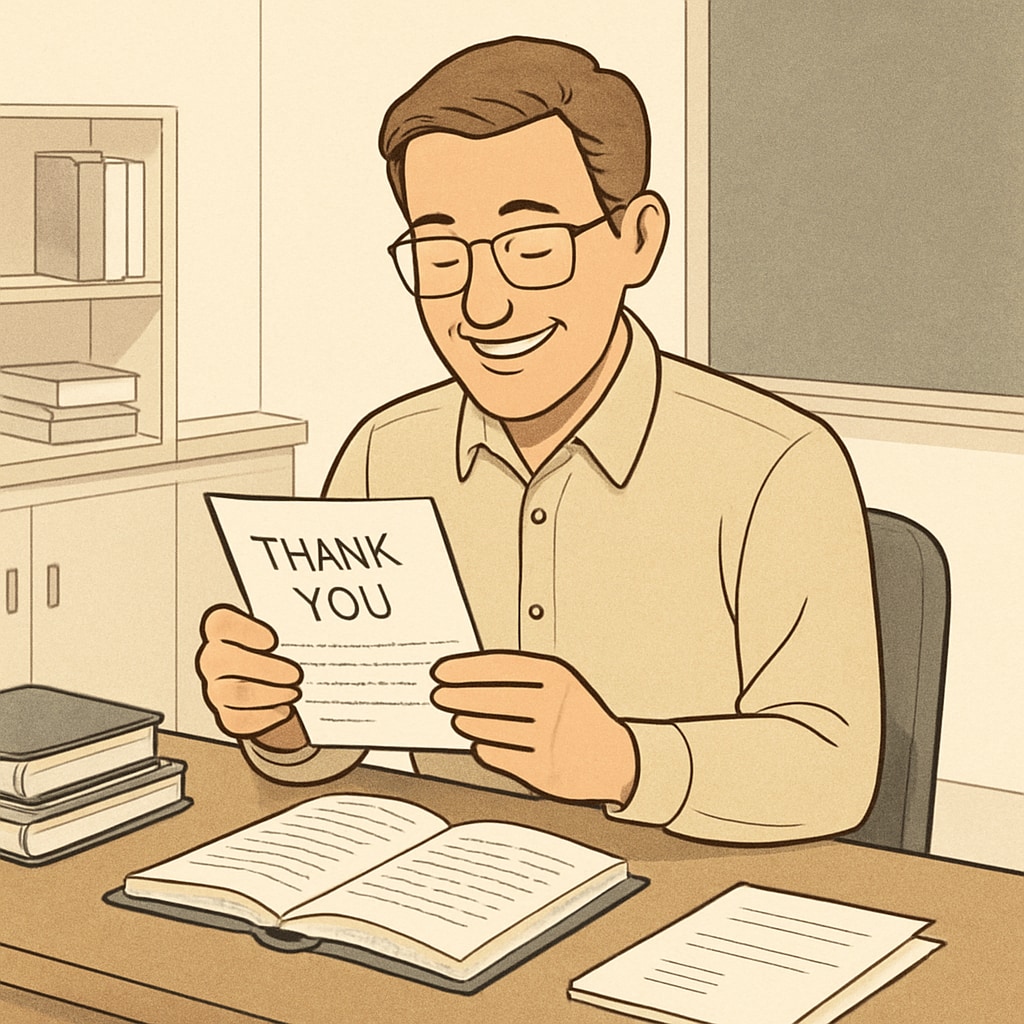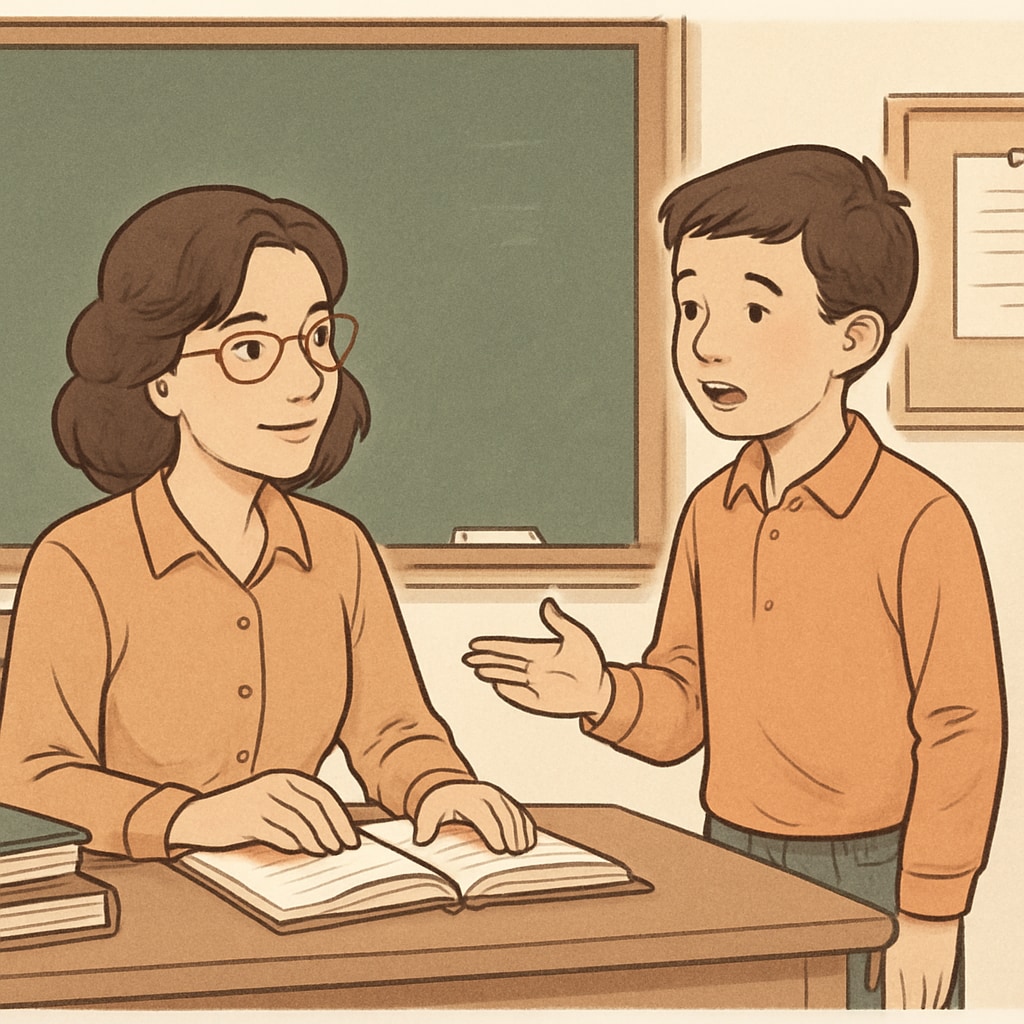When a student expresses genuine gratitude, the impact on their teacher can be profound. Moments of student gratitude, teacher influence, and meaningful teacher-student interactions often create memories that last a lifetime. These simple yet heartfelt “thank yous” are more than polite gestures; they reflect the deep respect and appreciation that fuel the passion of education professionals. In this article, we explore how such moments of gratitude shape educators, inspire their work, and create educational miracles in classrooms.
The Power of a Sincere “Thank You”
For teachers, their mission often extends far beyond textbooks and lesson plans. They strive to inspire, nurture, and guide students, sometimes without realizing the lasting impact they have. A sincere “thank you” from a student can validate an educator’s efforts and serve as a powerful reminder of why they chose this path. These seemingly small moments can reignite a teacher’s passion and strengthen their commitment to their students.
For example, consider the story of Ms. Carter, a high school English teacher who once received a heartfelt letter from a former student. The student thanked her for introducing literature that shaped their worldview and instilled confidence to pursue a career in writing. Ms. Carter shared, “That letter reminded me that teaching isn’t just about the curriculum—it’s about the lives we touch.” Such moments often lead educators to reflect on their role as mentors and motivators.

Listening and Respect: The Foundation of Connection
Gratitude is often born out of a strong teacher-student connection. When teachers take the time to truly listen to their students, they create an environment of mutual respect and understanding. This act of listening allows students to feel valued, and in turn, they are more likely to express appreciation for their teachers’ efforts.
Research supports the importance of active listening in education. According to Britannica, effective communication is a cornerstone of successful teaching. By making an effort to understand their students’ perspectives, teachers not only enhance learning outcomes but also foster meaningful relationships that can lead to heartfelt moments of gratitude.
For instance, Mr. Johnson, a middle school science teacher, recalled a student who struggled academically but improved dramatically after Mr. Johnson consistently encouraged and supported him. Years later, the student returned to thank him, saying, “You were the only one who believed in me when I didn’t believe in myself.” Moments like these highlight the transformative power of respect and empathy in education.

How Gratitude Shapes Both Teachers and Students
Gratitude doesn’t just impact teachers; it also helps students grow emotionally and socially. Expressing appreciation teaches students the value of recognition and respect, skills that are crucial for building positive relationships throughout their lives. In a way, gratitude creates a ripple effect, enriching both the giver and the receiver.
Teachers, on the other hand, often find renewed energy and purpose in these moments. A simple “thank you” can remind them of their ability to influence lives, even when challenges seem overwhelming. As a result, they may approach their work with greater enthusiasm and compassion.
- Gratitude fosters emotional well-being for teachers and students alike.
- It strengthens the teacher-student bond, creating a more supportive learning environment.
- Gratitude helps teachers reflect on their contributions, inspiring continuous personal and professional growth.
As educators and students alike learn to appreciate one another, the classroom becomes a place of mutual respect and inspiration—a true educational miracle.
Creating a Culture of Gratitude in Education
While spontaneous moments of gratitude are heartwarming, fostering a culture of appreciation within schools can amplify their impact. Teachers can model gratitude by acknowledging students’ efforts and celebrating their achievements. Similarly, schools can encourage students to express their thanks through letters, awards, or small gestures.
For example, programs like “Teacher Appreciation Week” or classroom projects where students write thank-you notes can help normalize expressions of gratitude. These initiatives not only uplift teachers but also teach students the importance of recognizing and valuing others’ contributions. According to Wikipedia, gratitude enhances interpersonal relationships and promotes a positive environment, making it an essential practice in education.
In the end, creating a culture of gratitude benefits everyone involved. It strengthens the bond between teachers and students, inspires educators to continue making a difference, and teaches students the value of respect and recognition.
Readability guidance: Use short paragraphs and lists to summarize key points; include clear transitions between ideas (e.g., “therefore,” “in addition,” “for example,” etc.); maintain a balance between emotional storytelling and practical advice. Limit passive voice to ensure an engaging and direct tone.


